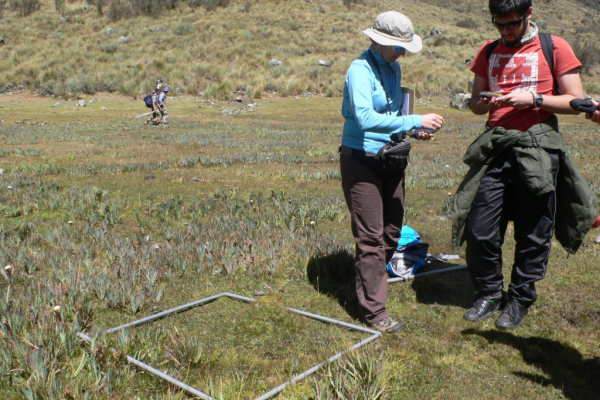Quilcayhuanca round two!

On our second field trip to Quilcayhuanca we are accompanied by Ken Young and Molly Polk, the biogeographers of TARN. The day was spent in the valley, where we learned about the characteristics of peat and the research that Ken and Molly are doing in the Cordillera Blanca. Ken hypothesizes that there are 3 main factors that determine the plant communities in the Cordillera Blanca: elevation, moisture, and human impact. The human impact component in this valley is the most apparent factor that Ken mentioned. The sheer number cattle and sheep present in the area as well as the presence of Werneria, a native plant with poisonous leaves, indicates the large impact that overgrazing has had on the area.
The majority of our time is spent getting our hands dirty as Molly walks us through a typical 1 square meter plot. We record a GPS point for the plot, measure the incline, measure the tallest plant, calculate the percent cover of each plant found on the plot, and lastly we take a soil sample. This whole procedure is only one component of Molly’s larger goal to answer questions of peat classification in the Cordillera Blanca and their changes over time.
